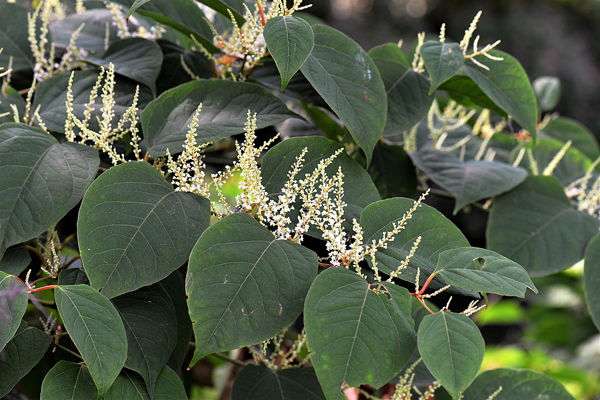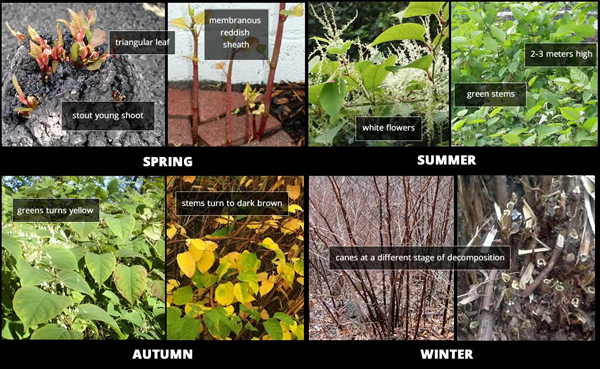If you believe that a tree in a public green area is in need of attention, please call us on (021) 4924000 and we will request our tree surveyor to take a look at it.
Any incidences of fallen trees outside of office hours can be reported to 021 4966512. In any emergency, calls should be made to 999.
Alien Invasive Floral Species in Cork City
Cork City Council acknowledges that the management of alien invasive flora species including Japanese Knotweed is a serious concern and involves considerable resources .To that end the Heritage Officer and the Parks Section of Cork City Council undertook a survey in 20116 to identify and map the location of Alien Invasive Flora Species including .Japanese Knotweed in Cork City. A programme of eradication commenced in 2017 and will be phased ( in line with available resources ) over the coming years to achieve full eradication
Japanese KnotweedFallopia japonica – Gliúneach bhiorach

Japanese Knotweed is classified as one of the top 100 worst invasive species worldwide because of its serious impact on biological diversity, impact on human activity and its capacity to invade new environments. It is widely distributed across Ireland and is an increasingly common sight on waste ground, the fringes of our waterways and roads and in our wetland habitats.
How do you recognise it?
The stem structures are distinctive with a green hollow bamboo like appearance and dotted with dark blue-purple speckles. Leaves are oval with a pointed tip, and have a distinctive zig-zag growth pattern on the stem.
The off-white coloured flowers are small and clustered and hang from the joint of the stem and the leaf. They flower from August to October. The roots are tough, thick and wood like in their appearance. If snapped they show a bright orange colour inside and have a consistency similar to that of a carrot. New rhizome growth is white in appearance and can be delicate. These root structures can extend up to 7 m in a lateral direction (but usually only up to 5 m) and 2m deep from the over ground parent plant.
During the winter season the stems become an orange-brown colour which may stay in place for a number of years. The new growth during spring is indicated by shoots of a red-purple colour with rolled back leaves, growing rapidly along the length of the roots.

Where do you find it?
Japanese knotweed is now very common and widely distributed across a variety of habitat types in Ireland. It is most prominent on roadsides, waste ground and in wetland habitats where it out competes native species and forms dense thickets. It is now very well established along river banks, roadsides and on waste ground throughout the city.
What should you do if you find Japanese Knotweed?
Prevent further spread
If you do find Japanese knotweed on your property, the most important thing that you can do is prevent any further spread of the species. Do no strim, cut, flail or chip the plants as tiny fragments can regenerate new plants and make the problem even more difficult to manage. It is also advised not to dig, move or dump soil which may contain plant material as this may contribute to its spread.
Management and treatment
The eradication of Japanese Knotweed requires careful consideration and planning. It can be successfully controlled through the application of appropriate herbicides by a competent person but it will require follow up treatments for a period of up to 5 years. It is important to get expert help before tackling an infestation and advise on the subsequent treatment of contaminated soils and disposal of dead plant material. Further information on
Management and Treatment can be found on the Invasive Species Ireland website @ http://invasivespeciesireland.com/toolkit/invasive-plant-management/control-programmes/
Further Information
Further information on Japanese Knotweed can be found on